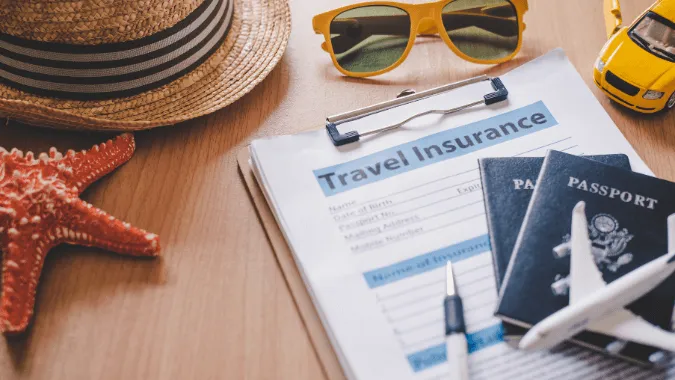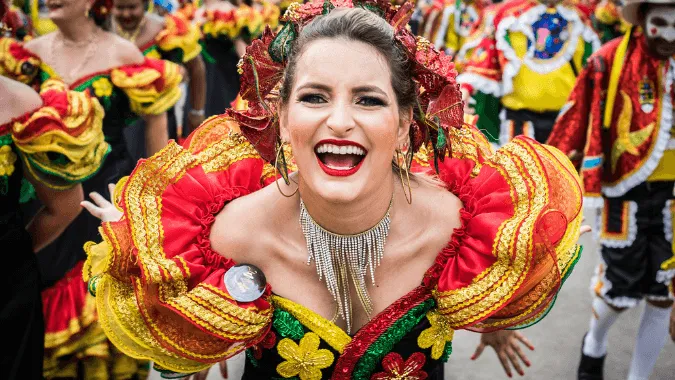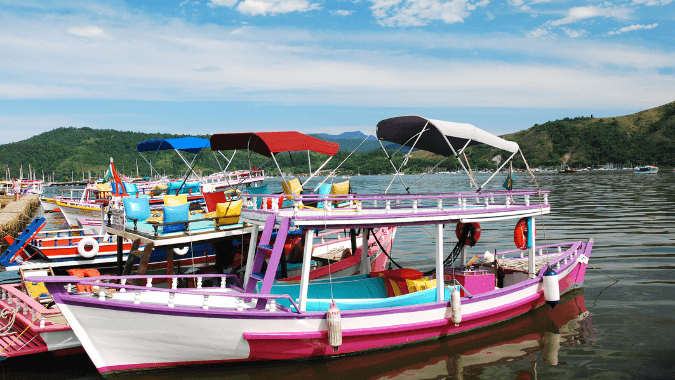Brazil
Discover how to visit Salvador de Bahia in the right way
Tags:
Salvador da Bahia, a true melody just by its name. Cultural, historical and natural destination of Brazil considered a true treasure that opens before you when you step on its soil. Also known as Capital da Alegria (Capital of Joy) and Roma Negra (Black Rome), Salvador was the first capital of Brazil from 1549 to 1763, and symbolically represents the miscegenation of the country as the cradle of capoeira, candomblé and axé, among others. So get ready to fill your eyes with colors, to hear the "bom dia e alegria" of the locals, to dance to the wild rhythm, to taste exotic flavors and to visit Salvador de Bahia as it should be. ![]()
![]()
![]()

The cultural and historical richness of Salvador da Bahia is mainly concentrated in the Pelourinho, where numerous churches and colonial houses fill the landscape / Photo: Tiffany Flour
1- Marvel at the streets of Pelourinho
If there is one place you can't miss in Salvador da Bahia, it is its historical center. Pelourinho for those who know it well. Authentic colonial-era streets of Portuguese architectural style occupy the oldest part of Salvador. Perched on the heights of the city, the neighborhood seduces all its visitors with its many pastel colors, its view of the bay of All Saints from the famous Lacerda elevator, its many churches and its artistic representations that occupy every corner. In fact, every time you go out to Pelourinho, you are sure to see a "roda de Capoeira" in Praça Sé, a percussion group in front of the church of Nossa Senhora do Rosario dos Pretos or women in traditional costumes offering you photos along the 15th of November square (Largo Terreiro de Jesus). Travel Tip: To enjoy all the historical and cultural richness of Pelourinho, I recommend you to take a City Tour of Salvador, and get to know the heavy past of these typical streets declared World Heritage Site by UNESCO.![]() The Largo do Pelourinho square, where the church of Nossa Senhora do Rosário dos Pretos is located, is a real artistic meeting point between percussion, capoeira and the Jorge Amado / Photo: Tiffany Flour
The Largo do Pelourinho square, where the church of Nossa Senhora do Rosário dos Pretos is located, is a real artistic meeting point between percussion, capoeira and the Jorge Amado / Photo: Tiffany Flour
2- Explore the flavors of Brazil
You don't really know a culture until you taste its gastronomy. And for good reason, Afro-Brazilian culture is so rich in tastes and flavors that it is exported not only to the rest of this immense country but to the ends of the earth. Bahia and its gastronomy are sure to please your palate with bobo de camarão, feijoada baiana, acarajé, vatapa or moqueca, among others. For those with a sweet tooth, the sweet tapioca and passion fruit mousse are not to be missed. The best restaurants and bars in the city are located in the historic center, Pelourinho, and in the Barra neighborhood, where the lighthouse is located. Don't hesitate to experiment with street food, omnipresent in Salvador, totally in keeping with the local Afro-Brazilian culture. For a stroll through an authentic Bahian market, the Sao Joaquim market, located north of the Bay of All Saints, is especially lively and coveted for its fresh fruits and vegetables, but also for other local products such as handicrafts, statues and necklaces used during Candomblé ceremonies. Travel Tip: Want to experience Bahian nightlife? Don't miss one of the best folkloric dance shows in town, accompanied by typical Brazilian food - an unforgettable night is guaranteed!3- Walk along its fine sand and swim in its turquoise waters
With a breathtaking view of the bay of Todos os Santos and the blue horizon of the Atlantic Ocean, Salvador da Bahia marks the rhythm of the daily life of its inhabitants to the rhythm of the waves and the tropical temperatures. However, it is not in the heart of the city where you can enjoy the most beautiful beaches, as these are rather small and urban where cleanliness and safety are not always present. But a few kilometers away, Salvador de Bahia offers paradisiacal scenery between fine sand and turquoise waters. Several boats can take you to spend a day in several of these beautiful neighboring beaches: Frailes and Itaparica in the south or Praia de Guarajuba and Praia do Forte in the north. All you have to do is choose. Travel tip: The island of Morro de Sao Paulo, located on the island of Tinharé, is a very popular tourist destination in Brazil, offering you an exceptional panorama of paradise. But if you want to discover something more tranquil, authentic and ecological, don't miss Boipeba Island, located just below.4- Experience all the charm of Bahia
Despite having a culturally respected and preserved historic center, it does not have all the excitement that Salvador de Bahia enjoys. In fact, the Barra neighborhood is one of the favorite places for locals and tourists to enjoy good bars and restaurants, but also a lively street life, with artistic performances to the sound of percussion instruments that roam the streets and street art paintings. It is also a quieter area to enjoy an afternoon on the lawn along Oceanica Avenue and the ocean. A pleasant walk along this avenue will allow you to discover the Morro do Cristo, the Farol da Barra as well as the Forte de Santa Maria if you continue along Avenida Septembre. Can you miss it? No, the sunset at the Farol da Barra is a spectacle!
Located just 5 km from Pelourinho, the Barra neighborhood is the second favorite place for locals and tourists alike for its beaches, sunset and lively nightlife / Photo: Tiffany Flour
5- Going out to meet the art
Salvador da Bahia is one of those magical places where a simple stroll turns into a visit to an art gallery. Tiles can be found in almost every store and other artistic space on the street, depicting places in the city and the Balinese customs of the locals. More than just taking home a souvenir, it is a true artistic process that is encouraged through art. The Bahia region is also very popular for its rich handicrafts, diverse in colors and materials, there is something for everyone! The famous Brazilian "canga" (sarong), African bracelets, loincloths, jewels, etc. You are sure to find what you are looking for in the many stores in Pelourinho or in the Mercado Modelo, located in the lower part of the city, accessible from the Lacerda elevator. Travel Tip: Build your travel itinerary with the best of Salvador de Bahia here.
Salvador da Bahia is one of Brazil's most popular spots for street art. Residents express their creativity through political, cultural and religious engagements on the city's stones / Photo: Tiffany Flour
Salvador de Bahia is a destination that can be described as a journey in itself. Such historical, cultural and natural richness requires several days to properly enjoy and immerse yourself in the enchanting Bahian culture. Through its five senses, Salvador takes you to the encounter of its African origins, its heavy colonial past and the flame that still keeps it dynamic, warm and joyful today. So, hold your heart in your hand and Bahia will welcome you with open arms.By: Tiffany, passionate communicator, inveterate marketer, enthusiastic traveler and Daytours4u contributor.
Tags:
Search
-
Exciting 4x4 route: São Luís and FortalezafromUS$1,014
-
Vila Gale Mares Resort All InclusivefromUS$100
-
Ecotourism in Chapada DiamantinafromUS$672
-
All inclusive Vila Gelé Cumbuco ResortfromUS$999
-
Full Day Cafayate Tour from SaltafromUS$68
-
Transfer Aeroparque - Buenos AiresfromUS$46
-
-
Transfer Ezeiza - AeroparquefromUS$91
-
-
Excursion to El Chaltén from El CalafatefromUS$153
-
-
-
-
-
-
-
-
-
-
-
Daytours4u © 2012-2019. Use of this website constitutes acceptance of the Terms & Conditions.
Open Chat
Hello, How May I Help You?




